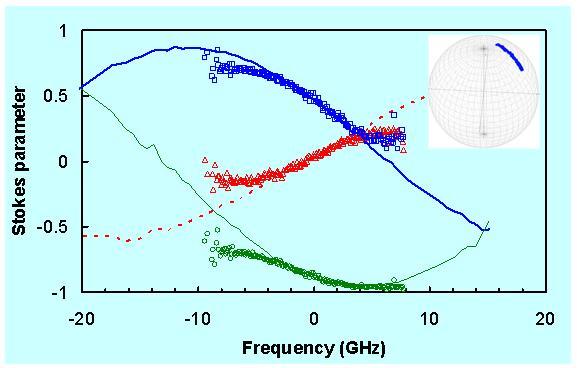EEEL's New Optical Performance Monitoring of Polarization Impairment in Optical Fiber Communication, Oct 2009
High-performance optical fiber networks are susceptible to degradation effects that can change with time. An example of this is polarization-mode dispersion (PMD). EEEL researchers Paul Williams and Tasshi Dennis have demonstrated a practical technique to determine the PMD of an optical fiber channel using polarization-sensitive linear optical sampling to measure the full electric field of modulated light as it exits a transmission fiber. This direct approach measures PMD according to its fundamental frequency-domain definition, removing possible ambiguities of other approaches.
The experimental design consists of a distributed-feedback (DFB) data laser at approximately 1550 nm modulated with 10 Gb/s DPSK format (repeated 16-bit data sequence) using a zero-biased Mach-Zehnder modulator. The modulated light passes through ~ 10 m of polarization-maintaining fiber (PMF) to provide a PMD to measure. The light is detected with a polarization-sensitive LOS system (8 ps resolution) consisting of a polarizing fiber coupler connected to a pair of quadrature demodulators. A 1.6 ms sample is collected and averaged word-synchronously. Fourier transformation produces the frequency dependence of the state of polarization of the data light allowing the PMD vector to be calculated from its fundamental definition of the frequency derivative of the state of polarization.
Results were compared with measurements of the PMF made under laboratory conditions using the standard Jones Matrix Eigenanalysis approach and yielded less than 8 % error when measuring a 12.6 ps differential group delay (DGD) value. Since the technique is capable of yielding the full frequency-dependent PMD vector, it should also yield higher orders of PMD. This work was presented at the 2009 IEEE Photonics Society Summer Topicals in Newport Beach, CA.


